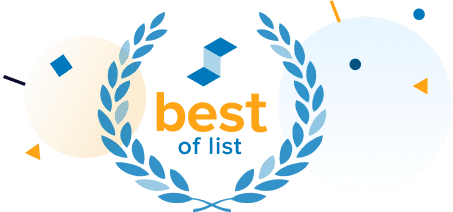Best Savings Accounts
April 2024
Savings accounts are federally-insured financial products designed to help your money grow. The best savings accounts provide competitive annual percentage yields (APYs) and don't charge fees. SuperMoney reviewed hundreds of savings accounts and these are our top picks.

SuperMoney may receive compensation from some or all of the companies featured, and the order of results are influenced by advertising bids, with exception for mortgage and home lending related products. Learn more
SuperMoney's Guide to Savings Accounts
Choosing the best savings account to deposit your money is an important decision. The best accounts have high interest rates, low minimum deposit requirements, no maintenance fees, great customer service, and minimal restrictions or penalties on withdrawals and transfers.
According to a recent survey, 57% of Americans have less than $1,000 in their savings accounts. The lack of a financial cushion can cause stress and make it difficult to manage unexpected expenses.
If you want to grow your savings, you'll need to analyze your financial situation, set goals, choose a savings account, and implement your plan. When it comes to finding the right financial institution, there are many factors to consider. Here's an in-depth look at savings accounts and how to find the best one to help you achieve your goals.
What is a savings account?
A savings account is a federally-insured, interest-bearing deposit account held by a bank or other financial institution. It is a safe place to store cash and earn modest returns.
Why open a savings account?
A savings account enables you to separate the money you want to save from the money you want to spend. The saved money becomes less accessible than the money in your checking account, as Federal law limits you to six transfers or withdrawals from your savings each month. If you exceed this limit, there is typically a fee.
In addition to helping you save, your savings account also earns you a small return each year on the money kept in the account. However, if you consistently surpass transfer limits, the bank may convert your account into a non-interest earning checking account.
What is the difference between a savings account and a checking account?
A checking account is more fluid, designed for everyday transactions. On the other hand, the money in a savings account should stay put and earn interest.
What are the different types of savings accounts?
If you are looking to open a savings account, be sure to choose the type that suits your needs. Here are your options.
Regular savings accounts
Regular savings accounts are found at most banks and the easiest to set up. They often have a minimum balance requirement and allow for transfers from a checking account. Savings accounts typically have a lower interest rate than other types of accounts, such as certificates of deposit (CDs), but they also usually have fewer restrictions on accessing your money. You can usually make deposits and withdrawals from a savings account at any time, although some accounts may have limits on the number of transactions you can make in a given period. Federal law limits withdrawals and transfers to six per month (excluding ATM withdrawals and transfers).
Certificates of deposit
A CD is a type of savings account that requires you to deposit a certain amount of money for a set period of time, usually ranging from a few months to a few years. CDs usually have a fixed interest rate, and you cannot make withdrawals from the account until the CD matures. If you do make a withdrawal before the CD matures, you may be subject to a penalty. CDs generally offer a higher interest rate than savings accounts, but they also have more restrictions on accessing your money. They can be a risk-free option if you're investing money you will need for a specific purpose, such as a down payment on a mortgage or a new car, and you don't want to risk losing any of your savings.
Automatic savings plans
Automatic savings accounts make it easy to save by making automatic monthly transfers from your checking to your savings. You can choose the dollar amount you want to transfer and the events that trigger the transfer (e.g., your payday). Some banks will offer lower banking fees when you sign up for an automatic savings plan.
Online savings accounts
Originally, only online-only banks offered online savings accounts. Today, though, many traditional banks also offer them. These accounts accept deposits remotely, often have no minimum balance requirements, have few to no monthly fees, and offer higher interest yields on deposits.
An online savings account is a good fit for you if you are tech-savvy and comfortable handling your savings account without in-person service.
Student savings accounts
Student savings accounts are designed for students who don’t make much money yet. They typically don't charge fees or have minimum balance requirements. Once the student graduates, the student will need to convert the account into a regular savings account.
Goal-oriented savings accounts
While you can set goals with any type of savings account, some banks offer accounts designed to help you achieve specific goals like buying a car or home. They don’t necessarily help you earn more on your savings but they will spearate funds for trhe goal. This can help you track your progress toward your goal.
How to compare savings accounts
What should you consider when comparing savings accounts? Here are the main factors:
- Interest rate yields
- How often the interest rates change
- Minimum deposit requirements (for the account, to earn the top yield, and to waive the monthly fee)
- Restrictions on withdrawals or transfers
- Account features
- Procedures for closing an account
- Quality of customer service
- Availability of branches
- Fees (overdraft, deposited item returned fee, incoming wire transfer fee)
The ideal account would have a high interest rate, a low minimum deposit requirement, minimal fees, great customer service, and minimal restrictions or penalties on withdrawals or transfers.
It would also offer access online and in-person. You may have to sacrifice some of these features for others in your search, such as a higher interest rate for online-only banking, so prioritize what is most important to you and then look for the institution that can provide the best offer.
Review and compare savings accounts here.
How much will I earn in a savings account?
The amount you can earn depends on the interest rate you get and the amount of money you deposit. The average savings account has an APY of around 0.05% annual percentage yield, while many big banks only pay 0.01%. That means if you have $10,000 in a savings account, the average you’ll earn back after a year is just $60. The savings accounts in the list above range from 0.25% to 5.26%
What banks have the best interest rates for savings accounts?
Currently, online banks offer interest rates that are substantially higher than traditional banks due to their low overhead and the competition. The savings accounts in the list above range from 0.25% to 5.26%.
What fees should I expect savings accounts to have?
Here are the common fees associated with savings accounts.
- Monthly maintenance fee: $5-$10
- Withdrawal limit fee: $5-$20
- Overdraft fee: $5-$40
- Stop payment fee: $15-$35
- Returned item fee: $10-$35
- Incoming wire transfers: $15-$20
- Outgoing wire transfers: $30-$45
- Paper statement fee: $0-$2
- ATM fees: $1-$5
When shopping for a savings account, be sure to determine which fees each institution charges and the amount of each fee.
Should I open an online savings account?
Given that they offer the most competitive interest rates, an online savings account may seem like the obvious choice. However, they do come with a few inconveniences. Here’s a look at the pros and cons of both online and traditional savings accounts.
Although online savings accounts have a lot to offer, large banks with brick-and-mortar branches can be very attractive to people who value a more personal relationship with their bankers. Here is a list of the pros and cons of going with a traditional savings account.
Choose the best savings accounts for you
A traditional savings account at a physical branch may be the best choice for you if you prefer a face-to-face personalized banking experience and want services beyond a savings account.
But if you are comfortable with technology and don’t require in-person interactions for your banking needs, an online account can offer you higher yields and more convenience.
Ready to get started? The list above shows SuperMoney's top options for savings accounts. Compare the rates and terms, and see what our community reviews say about their customer care.
About the Author

SuperMoney
SuperMoney is the most comprehensive financial services comparison site around. We have published hundreds of personal finance articles and provide detailed reviews on thousands of financial products and services. Our unbiased advice and free comparison tools help consumers make smart financial decisions based on hard data, not marketing gimmicks.